Ghost malls: The shopping centres time forgot
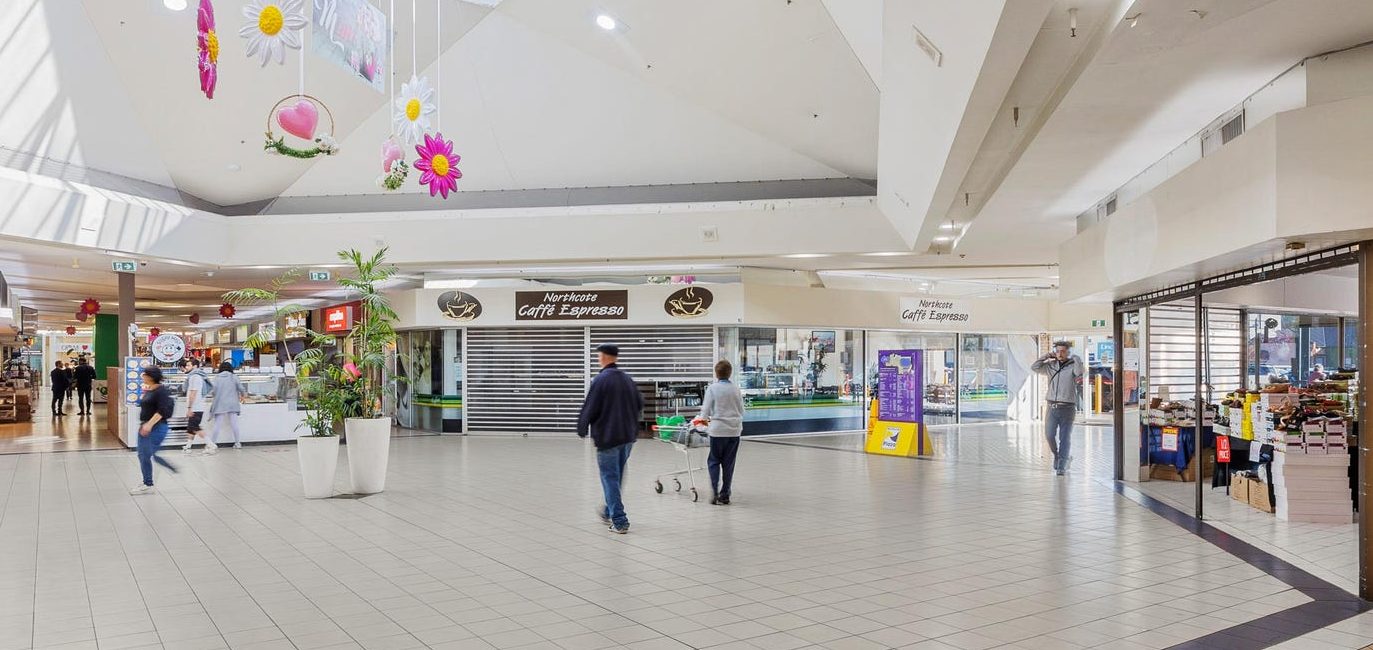
In the swinging ’60s, Eastwood Shopping Centre was considered an epicentre of Australian fashion and cosmopolitan retail.
Opened in 1964 as Westfield Eastwood with a price tag of £1 million, the glamorous mall was a hive of WASP society. It featured a Mark Foy’s department store, where housewives would shop for high-quality fashion items, fine furniture and dinnerware.
In 1994, with the high-end fashion boutiques and eateries long gone, the Westfield Group sold the centre, which was rebranded as Eastwood Village.
Three decades on, the now tired shopping centre is one of many suburban shopping malls across Australia stuck in a time warp.
Left with little-to-no-redevelopment, a daggy 1980s-looking Woolworths is the only major retailer keeping the centre and its fellow tenants ticking along, with many locals favouring the nearby Macquarie Shopping Centre.
Several attempts have been made to revamp the ageing precinct over the years, including a failed $276 million revitalisation project in 2016, but all have fallen by the wayside.
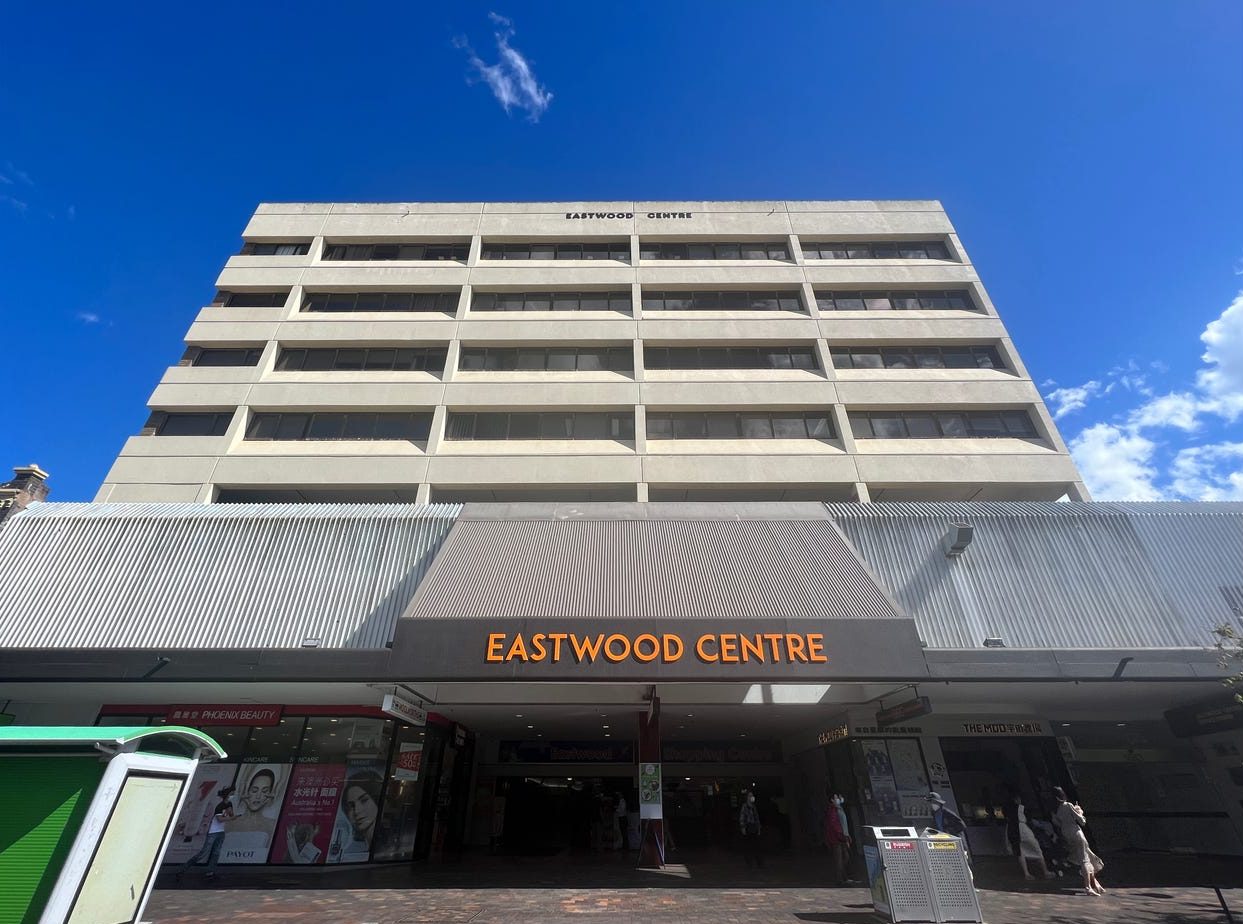
Eastwood Shopping Centre, NSW. Picture: realcommercial.com.au
Last month, however, Eastwood Village was finally approved for a vibrant $309m redevelopment project.
The long-awaited renewal will see dozens of shops in the complex demolished to make way for a new retail hub comprised of six high-rise buildings topped with 411 apartments.
Eastwood Chamber of Commerce secretary Steve Colquhoun said the redevelopment will breathe new life into the faded shopping precinct.
“The centre is very old and people are crying out for better retail in Eastwood,” Mr Colquhoun told the Daily Telegraph.
According to Eastwood Chamber of Commerce, high costs likely contributed to the delay of the centre’s revival.
CBRE Head of Retail Property Management & Leasing, Sheree Griff, said exorbitant construction costs have stymied many retail development projects like Eastwood Village in recent years.
“It’s making upgrades of shopping centres cost prohibitive when assessing the value outcomes,” Ms Griff told realcommercial.com.au.
“Running costs have also played a role, with inflationary pressures on the operating costs of a retail centre putting pressure on capital improvements.”
The ghostly halls of Morley Galleria
In the Perth suburb of Morley, the once grand Morley Galleria is another shopping mall where redevelopment plans have been thwarted by high costs, and is still awaiting refurbishment 12 years after plans were first proposed.
Formerly hailed “a cathedral to retail” by local member for Morley Amber-Jade Sanderson, the centre now resembles a ghost town, according to many former shoppers.
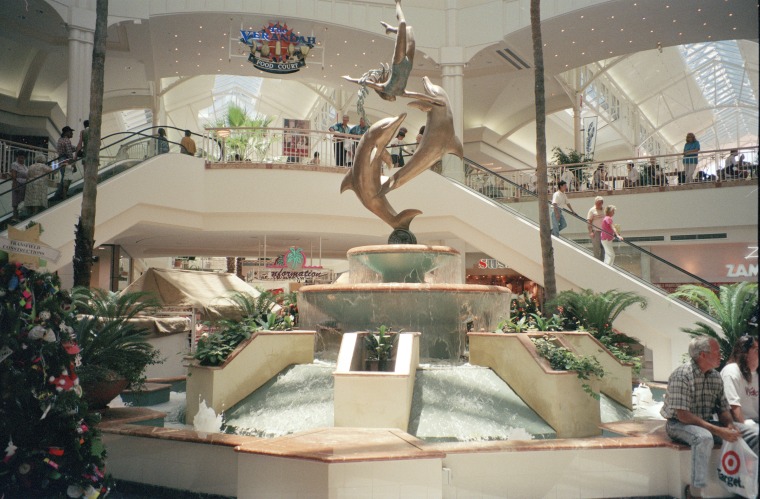
The Galleria Shopping Centre in Morley, WA, was refurbished in 1994, but has not changed since. Picture: State Library Western Australia.
One disgruntled Reddit user claimed Morley Galleria has “next to nothing” to offer customers.
“It’s Christmas time and upstairs looks like there’s been a zombie apocalypse. Lights are flashing, it’s darker than most Northbridge [Perth’s nightclub precinct] alleyways and [I] maybe counted 30 people from Myer to Woolworths,” read a post on the site last year.
In 1994, Morley Galleria underwent significant expansion including a Myer store and a cinema, but little has changed since.
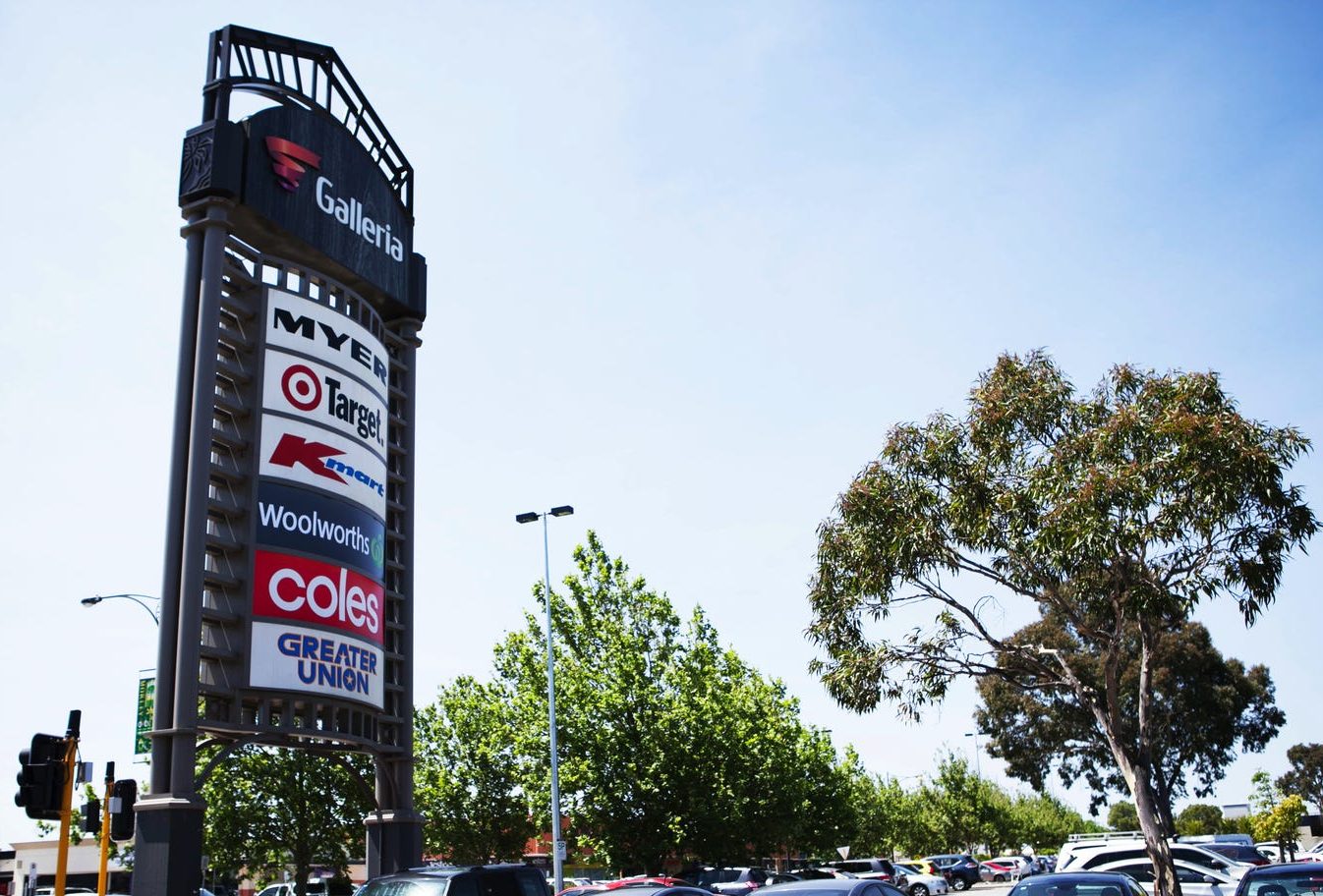
Morley Galleria in Perth. Picture: realcommercial.com.au
Plans to redevelop the mall were first announced in 2013. Developing partner Vicinity Centres suggested the refurbishment would cost $800 million, but was later scaled back to $350 million in plans approved by the city and the Metro Central Development Assessment Panel in 2019.
Amber-Jade Sanderson told realcommercial.com.au Vicinity Centres engaged Multiplex to undertake minor internal works to the Galleria, but have not yet secured a partner for broader redevelopment of the centre, nor announced a start date.
“Our community has put up with 10 years of promises and false starts and a rapidly deteriorating community asset,” Ms Sanderson said.
“My very strong view is that they need to start the redevelopment now or sell the asset. It has huge potential.”
Previous media reports allude to board indecision between Perron Group and Vicinity Centres as the reason behind the stalled construction, of which Vicinity is the controlling partner.
Lemon Grove, Northcote Plaza and the strata conundrum
A visit to Lemon Grove Shopping Centre in Chatswood NSW is another step-back-in-time experience.
Today, the fatigued three-storey complex has a popular Asian food hub on the ground level, which enjoys a steady bustle during lunch and dinner hours, while its upper floors are a mix of health, beauty and hairdressing shops.
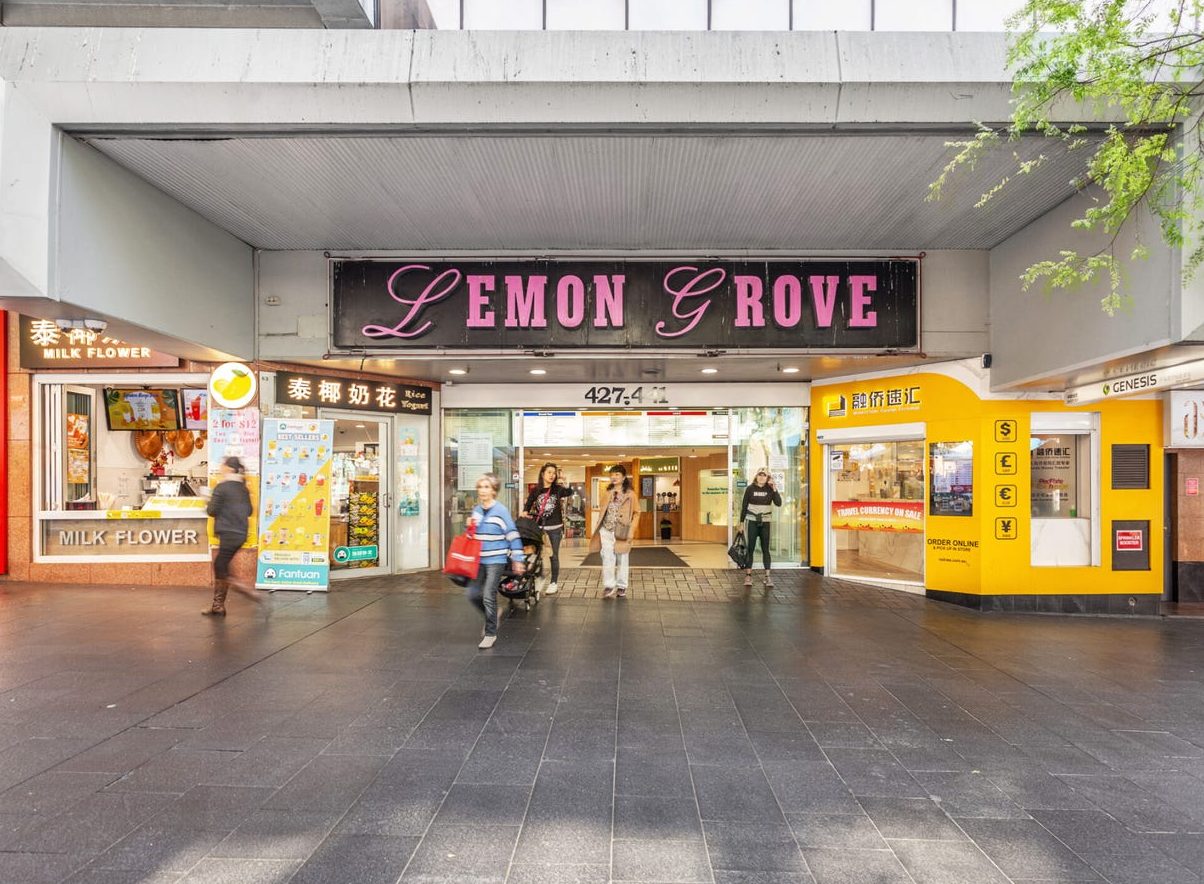
Lemon Grove Shopping Centre in NSW. Picture: realcommercial.com.au
But 45 years ago, Lemon Grove was a glitzy shopping and fashion retail destination and prime example of the 1980s shoulder pad era.
It was opened in 1981 and built by British property group MEPC, and Shead Property principal Bill Geroulis remembers Lemon Grove as “the place to be”.
“It was a very popular precinct connected to the Wallace Way shopping centre and had many high-end fashion boutiques like Edward Meller, Country Road and Laura Ashley,” Mr Geroulis said.
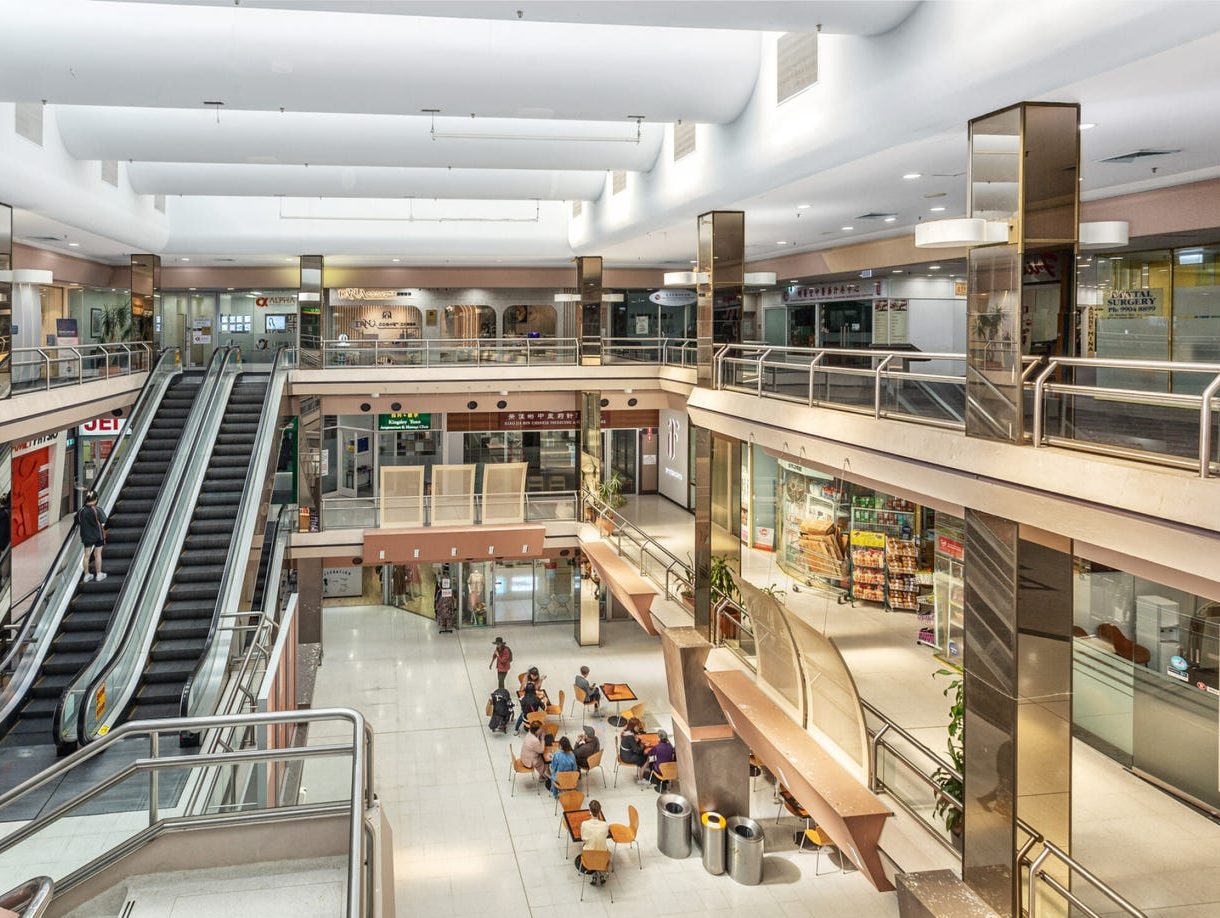
Lemon Grove Shopping Centre in NSW. Picture: realcommercial.com.au
But in 1983, the opening of the massive Chatswood Chase shopping centre down the road signalled the beginning of Lemon Grove’s decline in popularity.
A decade later, MEPC sold Lemon Grove to property developers, who, in a rare decision for the time, strata-titled the centre and on-sold its more than 60 shops.
According to Mr. Geroulis, the restructuring of Lemon Grove is why the centre has been left to deteriorate, compounded by competition from a nearby Westfield.
“When you lose control of a shopping centre to vast individual ownership, it can be very difficult for a consensus to be reached on its future.”
In the inner-north of Melbourne, the iconic Northcote Plaza has suffered a similar fate.
Regarded as one of the city’s daggiest and shabbiest shopping centres, Northcote Plaza is a scene of dim 1990s-era lighting and dingy fit-outs.
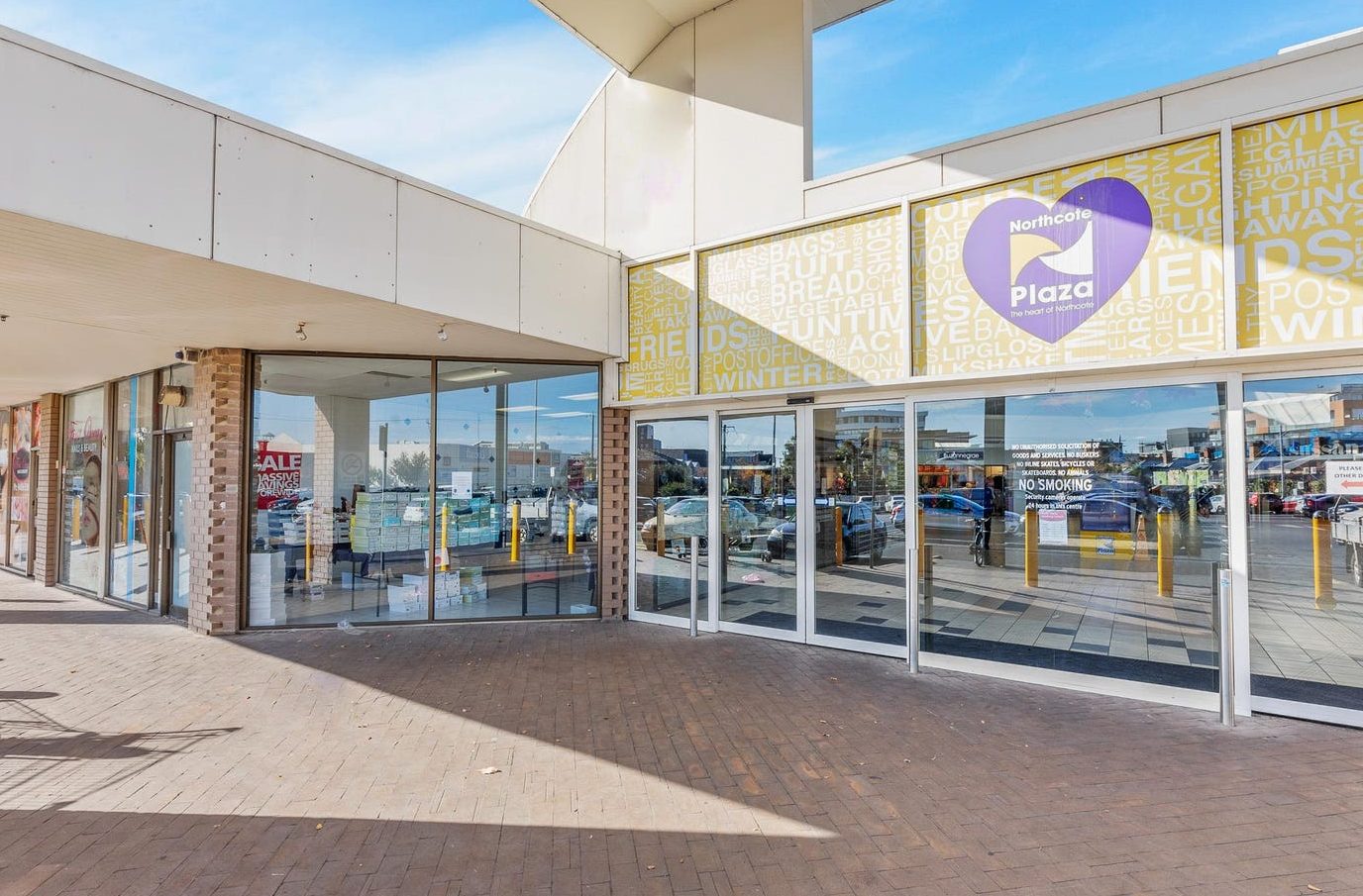
Northcote Plaza in Melbourne. Picture: realcommercial.com.au
It’s also considered a redevelopment disaster, with 18,000sqm of retail space divided into strata titles and managed independently by separate owners.
As a result, Northcote Plaza has remained in a 1990s time-warp, a stark contrast to the neighbouring Northcote Central shopping centre, which is currently undergoing a lavish $500m renaissance.
Highfield Private group director Steven Tropoulos said strata-titled shopping centres pose significant challenges to redevelopment due to their fragmented ownership structure and resulting legal, financial and logistical complexities.
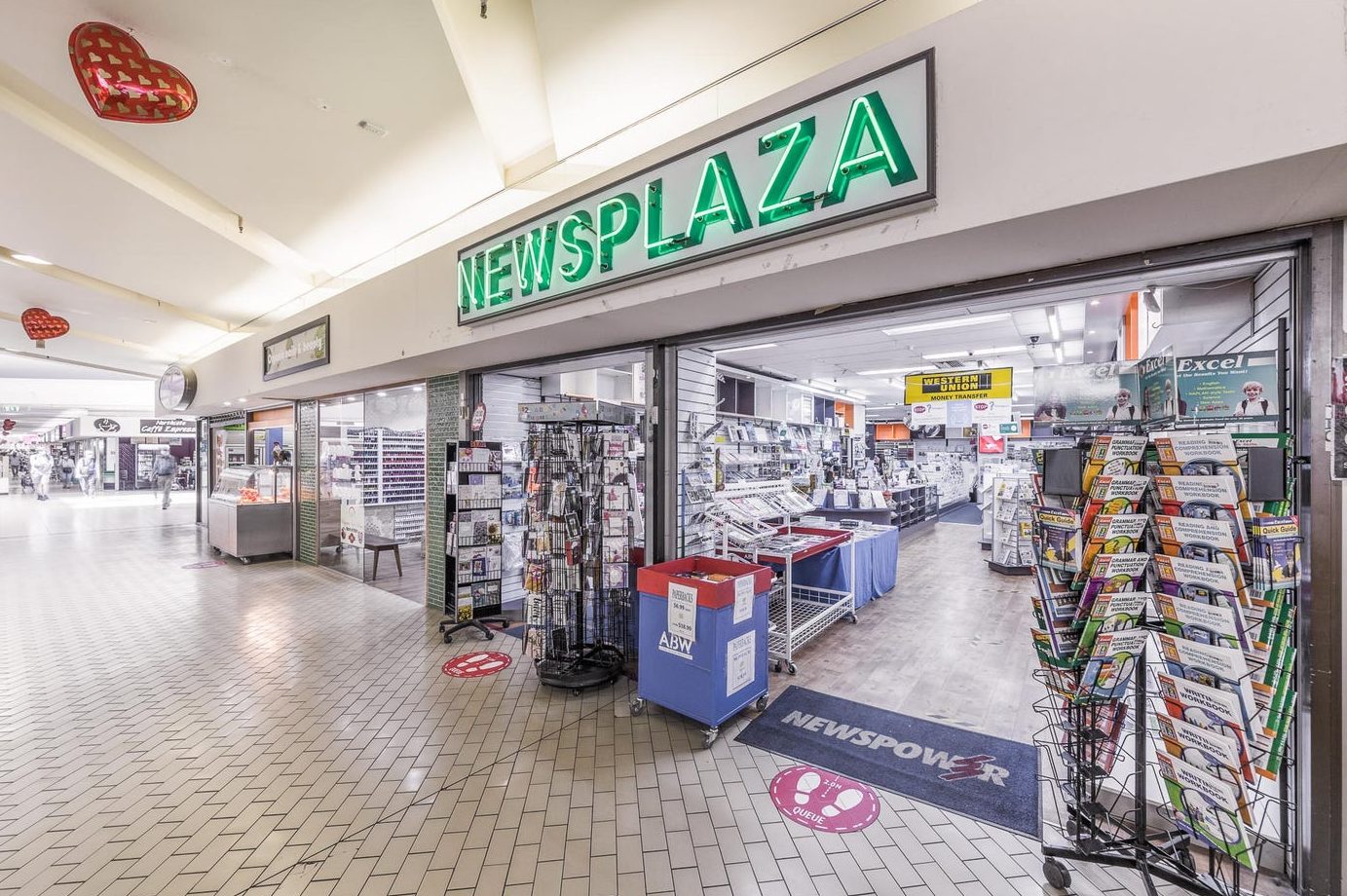
Northcote Plaza. Picture: realcommercial.com.au
“With multiple individual owners involved, reaching a consensus becomes difficult, particularly in jurisdictions where a minimum of 75% agreement is required for a collective sale or redevelopment,” he explained.
“This is further complicated by the differing priorities between owner-occupiers and investors, which can stall or completely block progress.”
These complexities also create perceived risks for lenders, Mr Tropoulos added, making financing more expensive or harder to secure.
“Ultimately, this structure can lead to the underutilisation of valuable land, especially in urban areas where many older strata-titled centres are located and where there is strong demand for more modern, higher-density mixed-use developments.”
The value of anchor tenants
Despite its retro look and feel, Northcote Plaza continues to enjoy a steady stream of shoppers, with many older customers attracted to its simplicity and longstanding retailers like Plaza Deli – a local institution for 20 years.
The centre is also famous for having two Coles supermarkets – a modern one plus an outdated one at the opposite end of the centre. When Bi-Lo left the plaza in 2006, Coles took over the space to prevent a competitor from moving in.
Sheree Griff said popular anchor tenants, such as a supermarket or department store such as Kmart or Big W, are crucial for shopping centres, especially older ones like Northcote Plaza.
“A high performing supermarket instils confidence in relation to footfall and repeat visits, which will provide brand exposure and boost sales,” Ms Griff explained.
“It is important, however, to build off the anchor tenant. While they are the foundation of a shopping centre, it’s what you do around it that makes a real difference in the performance of both the anchor and the surrounding speciality tenants.”
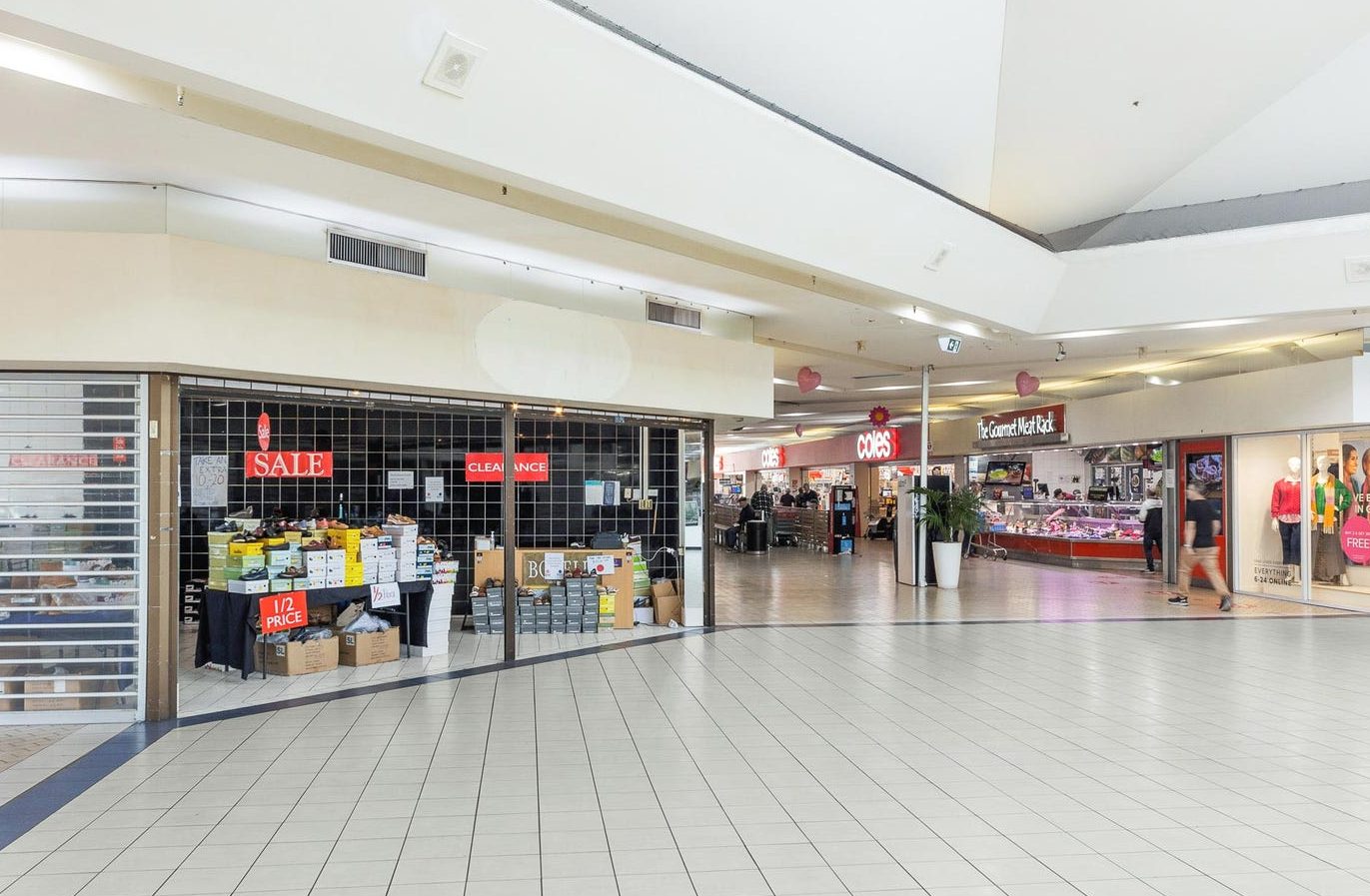
Northcote Plaza has two Coles supermarkets. Picture: realcommercial.com.au
Securing the right tenants is also a key factor in the redevelopment process, added Ms Griff, as they give the asset a point of difference while ensuring the brand affiliation strategy aligns with the target customer.
“This ensures that rents can be set at a level that drives value and sustainability, ultimately contributing to the centre’s long-term success,” she said.
“By taking a thoughtful and customer centric approach to redevelopment, shopping centre owners and developers can unlock the full potential of these older assets, transforming them into thriving destinations that meet the evolving needs of their communities.”







